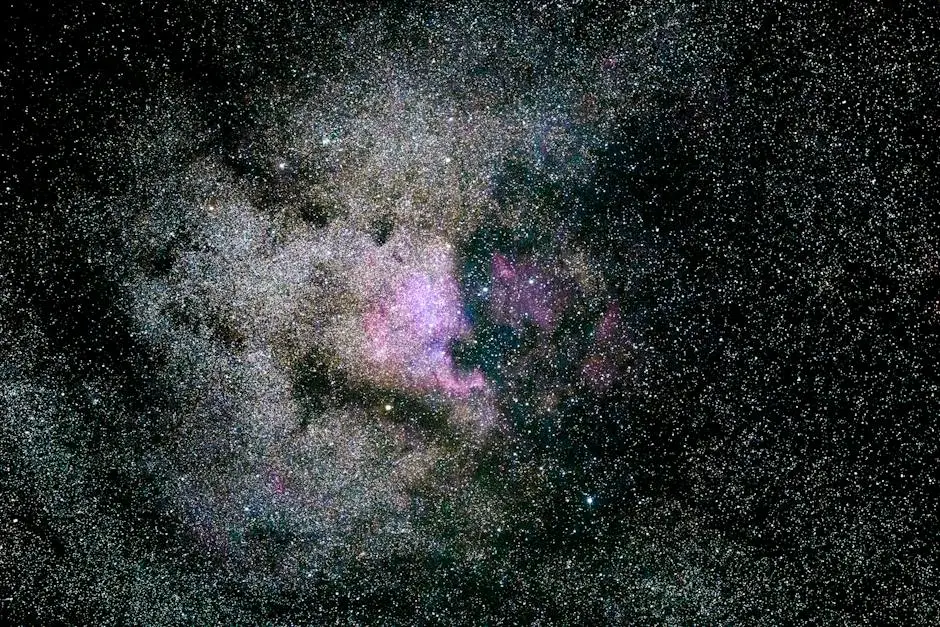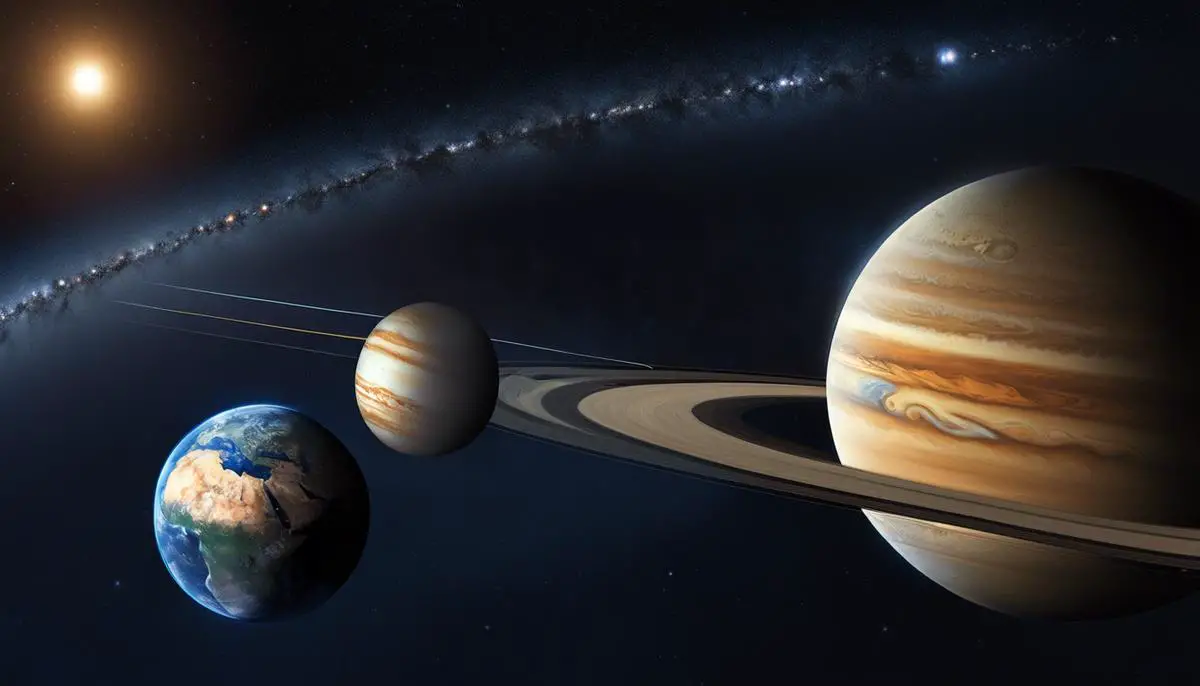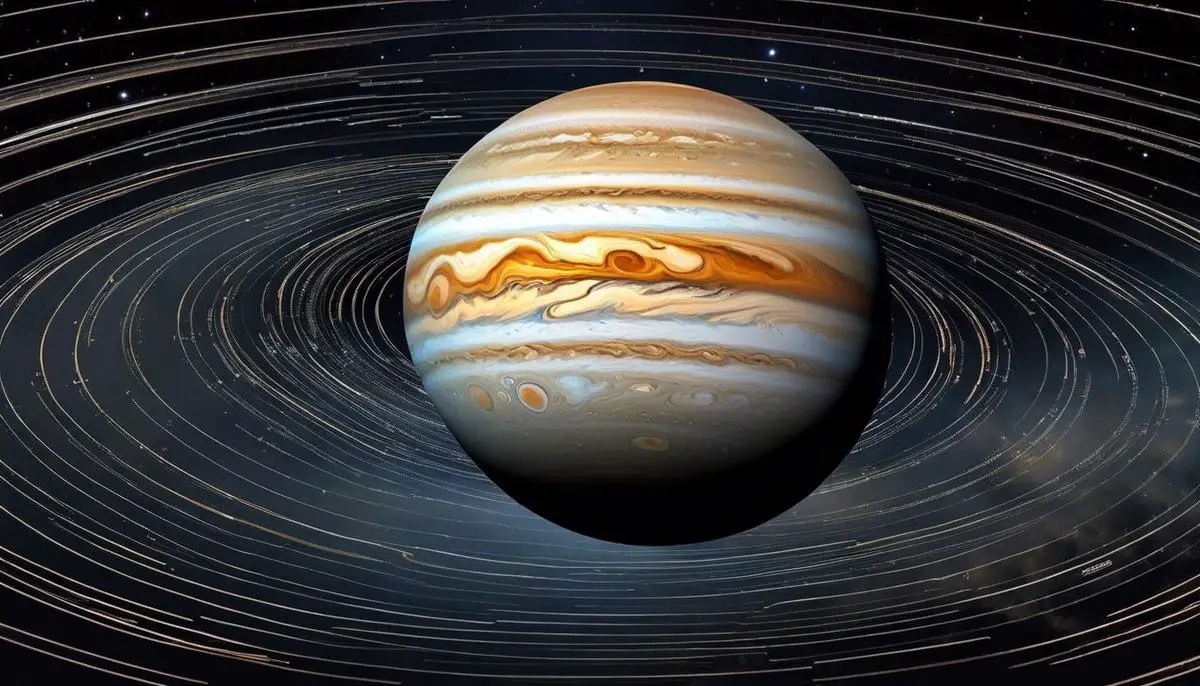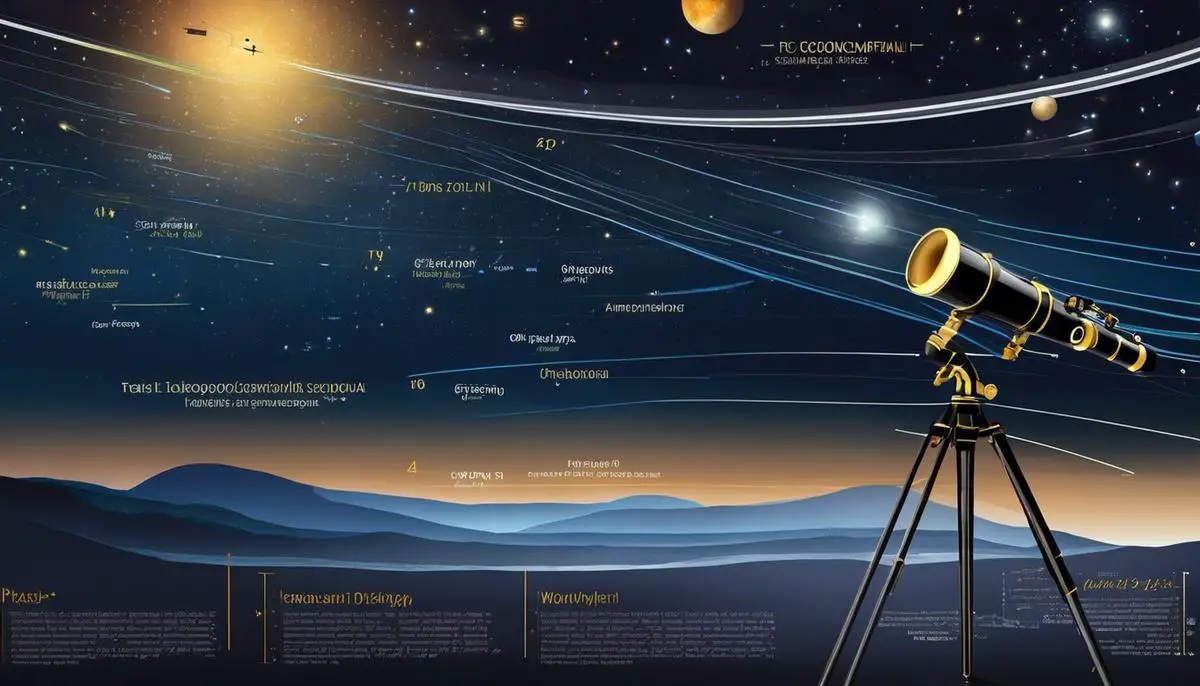A single interspace glance at the celestial expanses prompts humans with a myriad of questions. One of the most prominent among these queries is posed to the largest planet in our solar system, Jupiter. The immense distance separating Earth from Jupiter is a complex and dynamic measurement that encompasses a variety of scientific fields. Covering everything from the core concept of astronomical distance to the implications of Jupiter’s varied proximity to our home planet, we embark on an extensive exploration of the multitude aspects that outline this astronomical distance. We’ll scrutinize the cyclical dance Jupiter performs with the sun in its orbit, understand the detailed mathematical computations that enable us to gauge the ever-changing distance, and delve into the intriguing influence of Jupiter’s distance on our Earthly home.
Concept of Astronomical Distance
Astronomical distance is a measure of space that can only truly be appreciated through scientific observation and analysis. The enormous scale of the universe makes it necessary to use ingenious measures and estimations to grapple with the unimaginable vastness of interstellar and intergalactic space. Astronomers employ a complex but practical system of distance measurement known as the cosmic distance ladder that makes use of various techniques to calculate spaces in the universe ranging from a few million kilometers to billions of light-years away.
Parallax is one of the simplest and most used techniques for this purpose. This astrometric method works similarly to how the human eyes perceive depth, by estimating the apparent shift of an object when observed from two distinct viewpoints. Astronomers observe a given star at different points during Earth’s orbit around the Sun, recording the star’s apparent movement relative to a backdrop of distant stars. In closer proximity, such as within the solar system, radar-ranging is often used, where radio waves are sent to a nearby celestial body, reflected off its surface, and then detected back on Earth. The time it takes for the radio wave to return allows astronomers to precisely calculate the target’s distance.
However, for distances beyond the reach of parallax and radar-ranging, more indirect methods such as the use of standard candles – objects whose intrinsic luminosity is known – come into play. As one moves up the cosmic distance ladder, different standard candles become applicable. For instance, for greater values, Type Ia supernovae or Red giants are used, whose brightness can be seen from further away. It’s important to note that each step up the ladder relies on the accuracy of the previous one, thereby holding the intricate network of cosmic distance measurement together.
In essence, however simple or sophisticated, each technique used in the measurement of astronomical distances feeds into the ongoing aspiration of humankind to understand the universe. Indeed, while these distances are abstract concepts, grappling to comprehend them continually pushes the boundaries of human ingenuity. And so, the foundation of astronomical distance calculation lies not only in the stars above, but also in the relentless determination of earthbound observers.

The Orbit of Jupiter Around the Sun
The question of Jupiter’s changing distance from Earth relies heavily on understanding the nature of celestial orbits. Essentially, both Earth and Jupiter follow an elliptical path in their orbits around the Sun. However, Jupiter’s orbit is much larger and takes significantly more time, specifically about 11.86 Earth years to complete one revolution around the sun. In contrast, Earth makes the same journey in a comparatively brief 365.25 days.
Now, visualize two runners on separate tracks, one inside the other. They both start at the same point, however, the outer runner (representing Jupiter) travels slower and on a larger track, while the inner runner (Earth) is faster and on a smaller track. As the inner runner laps the outer runner, the distance between them fluctuates, reaching a minimum when they align on the same side of the Sun, a point known as opposition, and maximum when they are on opposite sides of the Sun, termed conjunction.
This solar alignment, and consequently the changing distance between Earth and Jupiter, has definitive influence on our observation and study of the planet. During opposition, when Jupiter is at its closest approach, it appears brighter and larger, providing optimal conditions for terrestrial telescopic observations and for launching interplanetary missions. On the other hand, during conjunction, the planet’s visibility is minimal, often cloaked by the Sun’s glare. Understanding this dynamic, echoing dance of planetary bodies, allows humankind to glean a more comprehensive picture of our colossal cosmos.

Mathematical Computation of Jupiter’s Distance
In the vast cosmic theater, mathematical models play a crucial role in the accurate measurement of Jupiter’s distance from Earth. One such monumental formula is Kepler’s Third Law, a prediction made in the 17th century by the revered astronomer Johannes Kepler. The law relates the cube of a planet’s average distance from the Sun to the square of its orbital period. The cube-to-square relationship offers a reliable methodology to estimate Jupiter’s average distance from the Sun (or its semi-major axis), which can then be used to calculate its distance from Earth, accounting for Earth’s own orbital radius.
However, just as the actors on a stage adapt their performance to match the changing scenes, the calculation of Earth-Jupiter distance isn’t static, courtesy of their differing orbital periods and the elliptical nature of their orbits. This dynamic feature necessitates numerical computations integrating their respective orbital parameters to glean a precise measurement at any given time.
Delving into the profound, it is essential to note the significance of the aphelion and perihelion distances – the farthest and nearest points in Jupiter’s orbit from the Sun. Accounting for these distances in computations bridges the gap between qualitative descriptions and quantifiable reality. By amalgamating the aphelion and perihelion distances with average orbital radii, scientists can derive the true anomaly—an angle, accounting for a planet’s elliptical orbit, which can further fine-tune calculations. Equations become even more sophisticated when incorporating Earth’s eccentric orbit and Jupiter’s orbital inclination relative to Earth.
The translation of these cosmic phenomena into mathematical terms stands testament to human innovation and fervor in decoding the mysteries of the universe. The intricate dance of planets, in the grandeur of space, is transformed through equations into comprehendible science, underscoring how mathematics serves as the essential underpinnings of our understanding of cosmic distances. The ceaseless refinement of these calculations echoes the timeless curiosity of humankind, enchantingly intertwining the tangible and the cosmic.

Impact of Jupiter’s Distance on Earth
Pondering the significance of variations in the Earth-Jupiter distance transitions us from technical explanations into a realm of potential implications.
A key interest is gravitational interaction, rooted in Sir Isaac Newton’s law of universal gravitation, where the force between two bodies is directly proportional to the product of their masses and inversely proportional to the square of their distance.
Primarily, this law applies to Earth and Jupiter, the two largest bodies in the solar system after the sun.
The gravity of Jupiter, despite its significant distance, is a crucial component in maintaining the asteroid belt location and preventing its debris from destabilizing the inner solar system.
Hence, a significant shift in Jupiter’s distance could disrupt this delicate gravitational balancing act, with potential implications for Earth.
Another perspective includes the study of Jupiter’s influence on Earth’s long-term climate.
This starts by examining Milankovitch cycles, which relate Earth’s climate changes to variations in its orbital eccentricity, axial tilt, and precession.
Jupiter’s huge gravitational pull can influence these elements, inducing significant variations in Earth’s climate over tens of thousands of years.
Hence, changes in the Earth-Jupiter distance could provoke dissimilar effects on these orbital characteristics, leading to different climate scenarios on Earth.
Finally, regarding space exploration, the variable Earth-Jupiter distance notably impacts mission planning.
Both speed and fuel efficiency weigh heavily on the timing for launching spacecraft to Jupiter.
During opposition, when Earth and Jupiter converge at their closest distance, fuel efficiency is at its peak, allowing for shorter travel times.
Thus, a significant reduction or increase in this distance could directly impact the feasibility and cost of future missions to Jupiter and its moons.
Consequently, the distance between Earth and Jupiter serves not only as a fact of astronomical interest but also as a parameter of profound significance in maintaining our solar system’s stability, understanding Earth’s climatic history, and paving the way for future explorations.

As we navigated our cosmic journey, it became evident how much Jupiter’s distance from us is an integral part of our celestial understanding. The symbiosis of mathematical precision and astronomical observations uncovers the dynamic relationship between Earth and Jupiter. With the changing figures comes the mutable impact Jupiter exerts on Earth, affecting phenomena like gravitational waves and tide patterns, and consequently the suitability of our planet for the life it contains. Truly, the constant alteration in Jupiter’s distance forms a fascinating, if intricate, waltz across the cosmos, one that forces us to examine both the vastness of space and the space within our own understanding.
![]()
